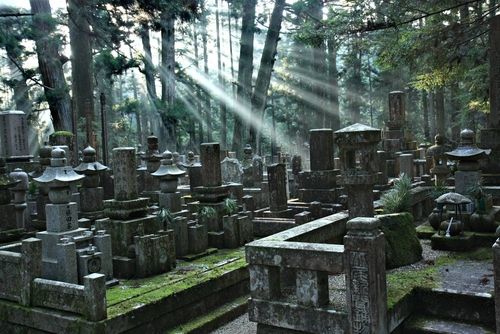 Like many Japanese customs, Shinto funerals, called Sosai, are full of rites and rituals. In fact, there are twenty separate rituals that go into a proper Shinto funeral. Mixed with elements of Buddhism, these funerals allow the kami, or spiritual energy, of the deceased to move on to the next world.
Like many Japanese customs, Shinto funerals, called Sosai, are full of rites and rituals. In fact, there are twenty separate rituals that go into a proper Shinto funeral. Mixed with elements of Buddhism, these funerals allow the kami, or spiritual energy, of the deceased to move on to the next world.
Shinto is the oldest religion practiced in Japan; over 3.4 million people consider it their sole religion. The belief system mixes Buddhist practices with old traditions and has been passed down through generations. Here’s what happens when someone who practices Shinto passes away.
Before the Funeral
After a death has occurred, the family’s Shinto shrine and Buddhist altar are covered to keep the spirit of the deceased from entering them. A small table decorated with flowers, candles, and incense is put next to the bed of the deceased.
The oldest son or oldest male relative is in charge of making funeral arrangements. The funeral is held as quickly as possible, with exceptions being made if family members have to travel a long way to be present or if it’s the second day of the six-day lunar cycle.
The First Four Steps
The first rite is the washing of the lips. A close relative will wet the deceased’s lips with water, giving them the last taste of it. The second step is washing the body. Many family members may be involved in this process.
Step three is announcing the death. Family members announce the death to the spirit world through prayers. The next step involves “pillow decorations.” The deceased’s head is propped up on a pillow facing north. A knife or sword is laid next to the decedent. Offerings of food are made to the gods.
The Next Four Steps
For the fifth step, the deceased’s body is placed in the coffin. Step six involves food offerings to the deceased. Favorite meals are made twice a day until the body is cremated.
In step seven, the family announces the return of the kami to the local shrine. This can be done over the phone. Step eight is when the local priest blesses the burial site.
Steps Nine Through Twelve
In the ninth step, the priest purifies himself to get ready for the funeral. This person will pray while ceremonially washing. Step 10 is akin to a wake. Mourners gather to offer their condolences. Priests pray for the deceased’s kami and for comfort for the family.
For step 11, the priest holds a wooden tablet over the decedent’s body, saying prayers that will transfer the kami into the tablet. Step 12 sees food served to mourners. It’s typically prepared elsewhere so it’s not contaminated by death.
Steps 13 through 16
Step 13 is the funeral service, held at home, in a funeral parlor, or in a community center, since death is too unclean for a shrine. The room is purified, offerings are made to the gods, and eulogies are given.
Step 14 is the farewell ritual, where mourners pass the coffin to say goodbye to the deceased. They also offer prayers for the family. In step 15, the coffin is prepped to travel to the gravesite or crematorium. The coffin is decorated so the deceased will know it’s time to move into the next world. Step 16 is the funeral procession.
Steps 17 through 20
In step 17, the home of the deceased is purified. The 18th step involves offering burial rites. Family and friends gather at the gravesite or crematorium.
Step 19 is “picking of the bones,” where someone removes any bone fragments from the cremated ashes and puts them in a vase to be placed in an above-ground mausoleum. Step 20 is when ashes that aren’t buried are brought home and placed in the family shrine.
As you can see, a lot of ceremonial rituals go into a Shinto funeral. This beautiful tradition helps the family say goodbye.
Add Your Comment